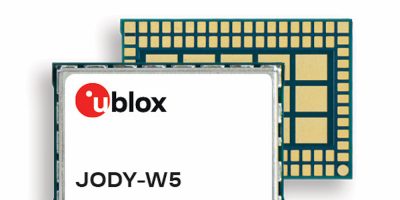Independent distributor, Rutronik, has signed a franchise agreement with fabless semiconductor company, MediaTek to distribute MediaTek’s portfolio of IoT chipsets in Europe and Israel.
Its Genio processors offer fast multi-core performance with high energy efficiency, making them suitable for robotics, industrial automation and IoT applications.
The agreement adds another semiconductor company to Rutronik’s linecard. MediaTek specialises in developing SoCs for mobile, home entertainment, connectivity and IoT products. The Genio series targets brands developing consumer, enterprise, and industrial smart applications at the premium, mid-range and entry levels. Rutronik will help distribute the Genio processors to customers that are designing smart home appliances, industrial automation applications, robotics, POS (point of sale) devices, digital signage, and other IoT applications.
“For us, customer orientation and future viability means offering precisely those products that are currently in demand or will be in demand. MediaTek’s innovative components and technologies add real value to our line card. The symbiosis of high-performance components and our know-how fulfills exactly what our customers expect from us as a distributor,” said Reza Armin Maghdounieh, vice president product marketing, semiconductors at Rutronik.
MediaTek said its Genio series combines quality, robustness and longevity. It offers fast multi-core performance with high energy efficiency, even for computationally intensive applications, said the company. Its development environment allows designers to customise products using Yocto Linux, Ubuntu, and Android and MediaTek’s development kits help to reduce the costs of development in the long term and accelerate time to market.
In addition, Rutronik’s Embedded portfolio offers board-level solutions from manufacturers including Advantech, Kontron, Seco, and VIA in different form factors using the Genio chipsets. For customers, this means a fully comprehensive ecosystem from the product to the design and the solution, said Rutronik.
“We are continuing to see a strong demand for consumer, enterprise, and industrial smart applications, so we look forward to working closely with Rutronik to help brands bring intelligent devices to market faster,” said Richard Lu, vice president of MediaTek’s IoT business unit.
He hoped: “As the largest European distributor, Rutronik will help us to further expand our IoT footprint in the region.”







